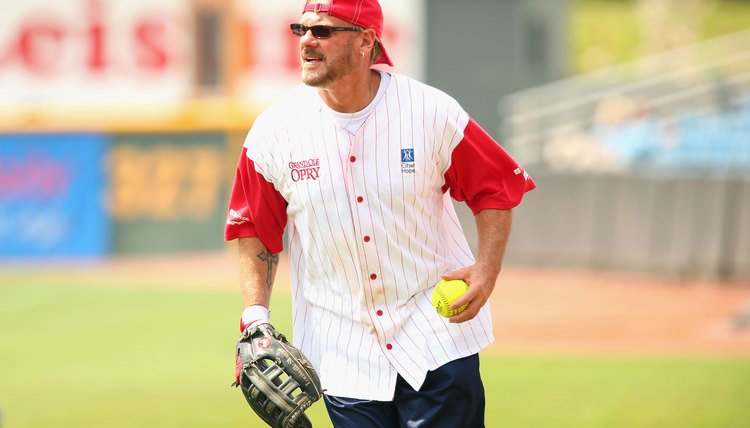Men's ASA Slow Pitch Softball Rules

Slow pitch softball gets its name from the fact that pitchers must put a 6-foot arc on their pitches, slowing the speed of incoming pitches. The Amateur Softball Association of America is the governing body of softball in the U.S. and sets the rules for most recreational and all Olympics-sanctioned leagues. For men's slow pitch softball, the ASA has added a variety of rules to help facilitate fair and faster play.
Ball Specifications
Balls used for 12-inch slow pitch must be 12 inches in circumference, have a coefficient of restitution of .440 or less and a compression of 375.0 or less. The ball can have a white or optic yellow cover. A 16-inch ball must be 16 inches in circumference, weigh 9 oz., have a coefficient of restitution of .470 or less and a compression of 375.0 or less. The ball must have a white cover.
Field Specifications
For slow pitch played with a 12-inch ball, bases must be 65 feet apart. The pitcher's platform must be 50 feet from home plate. The minimum fence distance is 300 feet, with the maximum 315 feet. For men's 16-inch slow pitch, the bases are 60 feet apart, the pitcher's rubber is 38 feet from home plate and the fence distances are 250-feet minimum with no maximum.
Base Running
For Masters, Seniors, Master 40-OSP and 45-OSP men's slow pitch, batters may use a courtesy runner if they reach base. A courtesy runner does not replace the base runner on defense. Courtesy runners must be on the lineup card of the game being played, and teams must report a courtesy runner when he enters the game. During Masters and Seniors games, teams may use unlimited courtesy runners per inning, with only one allowed per inning in Master 40-OSP and 45-OSP games.
Stealing a base is illegal in the Master and Senior divisions. A player may not begin a steal until the pitch has reached the front part of home plate or if the pitcher has the ball but is not in the vicinity of the pitcher's mound.
There is no need to run the bases after an over-the-fence home run in men's major slow-pitch divisions.
Over-the-Fence Home Runs
To prevent a loss of balls and game delays, ASA limits the number of home runs hit over the fence during regular men's and Master slow pitch games. Once a team has reached its limit, any balls hit over the fence from that point on count as an out, and base runners may not advance. Limits vary, based on the type or class of league within these two divisions.
References
Writer Bio
Sam Ashe-Edmunds has been writing and lecturing for decades. He has worked in the corporate and nonprofit arenas as a C-Suite executive, serving on several nonprofit boards. He is an internationally traveled sport science writer and lecturer. He has been published in print publications such as Entrepreneur, Tennis, SI for Kids, Chicago Tribune, Sacramento Bee, and on websites such Smart-Healthy-Living.net, SmartyCents and Youthletic. Edmunds has a bachelor's degree in journalism.
